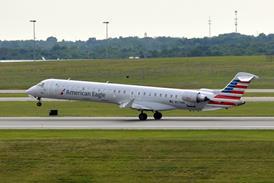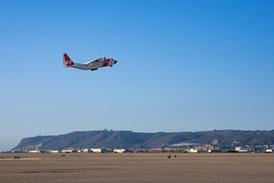Gulfstream has received the first certification for an enhanced vision system (EVS) and plans to begin installing the low-visibility flying aid on GV business jets early next year. The EVS is a Kollsman infrared camera which projects a conformal image of the outside world on to the aircraft's Honeywell head-up display.
At night or in low visibility, EVS allows Gulfstream pilots to fly a visual approach down to a 100ft (30m) decision height. Without EVS, crews have to break off the approach at 200ft if they cannot see the runway lights. The dual-band infrared camera is designed to pick up the thermal output of the runway lights through fog.
Senior vice president programmes Pres Henne says Kollsman is set to begin delivering production cameras in the first quarter of next year, when Gulfstream plans to begin installing the system in new GVs and retrofitting in-service aircraft. Costing around $500,000, EVS is an option on the GV but is standard on the improved GV-SP now under development. Certification as an option on the GIV-SP is planned for next year.
Gulfstream, meanwhile, has received European Joint Aviation Authorities validation of the GIV-SP and expects long-awaited approval of the GV late in the first quarter of next year. JAA validation of the GIV-SP was based on certification of the aircraft in several European countries, and was a "paperwork exercise", says Henne, but the GV is a new validation requiring additional testing and changes to the aircraft. Structural tests required by the Europeans are to be completed by year-end, he says.
Changes needed for JAA approval of the GV, such as structural, system and software modifications, have already been incorporated in a GV for an Italian customer. The work was performed by completion centre Jet Aviationin Basel.

Source: Flight International























